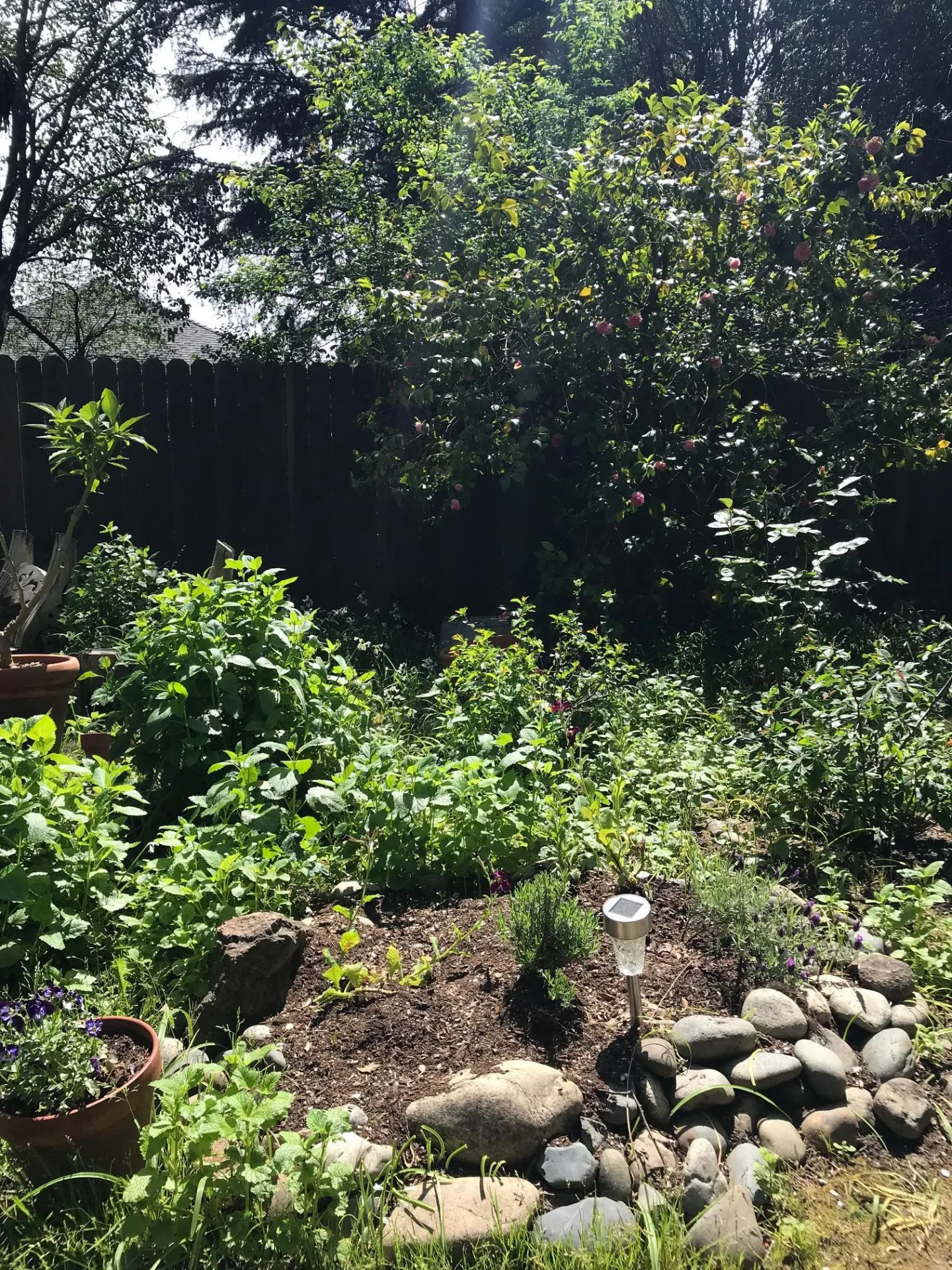By Cindy Watter, UC Master Gardener of Napa County

While organizing some of my old newspaper columns, I came across one that declared my
affection for invasive plants. In fact, I ranked them at the top of my plant pantheon, because for
me, “invasive” can be synonymous with “easy to grow.” (Yes, I’m talking about you,
passionflower.) Well, here’s another case where my frivolity has come back to haunt me.
About 30 years ago I bought a beautiful lemon balm (Melissa officinalis) and plunked it in a
large pot in a semi-shaded area. By the end of the summer, several plantlets had appeared in the
surrounding area. I dug some of them up and gave them away and allowed the others to go forth
and prosper.
Pretty soon the wild onion had a rival for territory, but the lemon balm won because it has a
longer growing season. The green mounds of heart-shaped, toothed leaves grew three feet tall,
bore tiny flowers—which of course had seeds—and attracted bees, butterflies and
hummingbirds. They made a charming tableau, and then they took over.
Everything in their vicinity had to adapt, meaning all the scented geraniums got leggy, and the
lavenders had to stretch until they were practically horizontal to get enough sun. Lemon balm
obscured the tiger lilies and competed with the roses for water. In fact, the lemon balm was
bursting with rude health, to the detriment of other flowers. I wondered why it was so successful
in my backyard.
Napa has the ideal climate for lemon balm, which is a member of the mint family. Our winters
are mild, and even on the hottest days we can usually count on a cool evening breeze. My yard
has plenty of organic matter (compost) in the soil, which lemon balm likes, although it grows in
almost any kind of soil.
It can survive drought because we have cool nights and foggy mornings. While it prefers dappled
sunlight, it grows in sun or shade—in other words, it can grow almost any place.
Most mints send out runners, but lemon balm flowers set seed, and those fly around everywhere,
often carried by birds. Another reason for its success is that it doesn’t attract pests. The worst that
can happen is the leaves might get discolored from overcrowding.
Native to the Mediterranean and Central Asia, lemon balm made its way to Europe and then to
America in the 18 th century. In those days, cooks valued it as a flavoring in jellies, cakes and
drinks. I like it in fruit salad. Others dry it for potpourri or for stuffing pillows. Its scent was
thought to have calming properties, and I think it does, until I am reminded that I need to thin all
those plants one of these days.
The best way to control lemon balm is not to allow it to spread in the first place. Well, that ship
has sailed, so I will have to dig out the plants. I did so once and more sprang up. Remember the
myth about Jason and the dragon’s teeth? When planted, the teeth come back as warriors.
Research tells me that, with continued effort, the lemon balm will diminish over time. Or I could
lay down layers of corrugated cardboard, compost and mulch (a process known as sheet
composting) and quell the plant’s fertility that way. Foot traffic will inhibit growth, too. Maybe I
will cut a new path through the biggest clump.
Since lemon balm is nearly impossible to eliminate once established, the best way to control it is
to prune it before it sets seed. Forget the pruning scissors, just shear the tops. It’s faster.
Even though lemon balm has taken over my yard, I love the plant. Besides being easy to grow,
it’s not poisonous, unlike foxglove and brugmansia, two of my favorites. Finally, it really is
attractive, and it has a delightful fragrance, fresh and citrusy.
It’s a pleasure to sit in the yard after a weed-pulling session, admiring the lemon balm covered
with humming bees. The only problem is that here is so much of it.
I went to a funeral a couple of years ago, and the widow came up to me, smiling, and said,
“Cindy, I still have that lemon balm you gave me all those years ago.” I thought, “Wow, and
she’s still speaking to me.”
Photos by the author, Cindy Watter.

